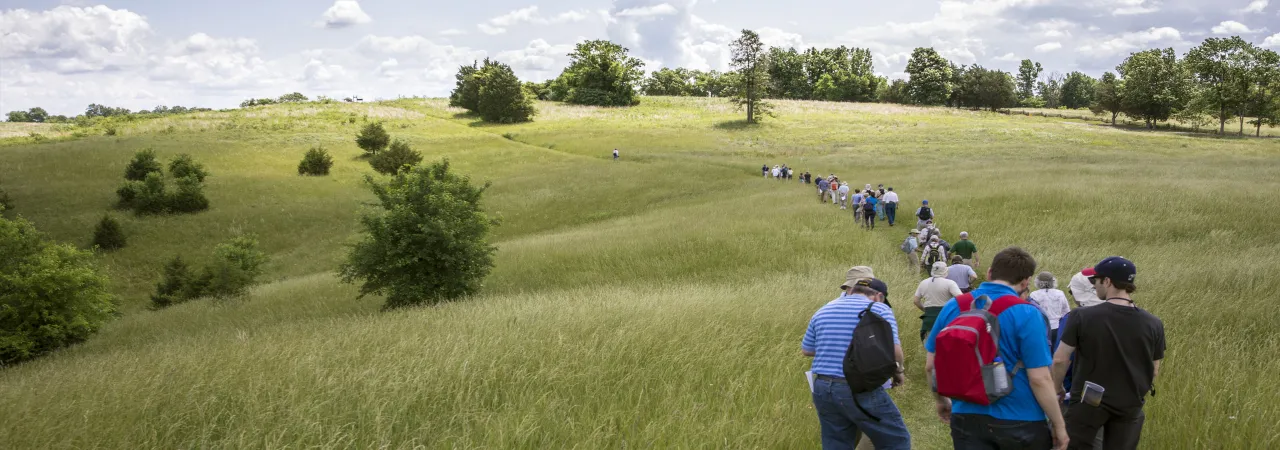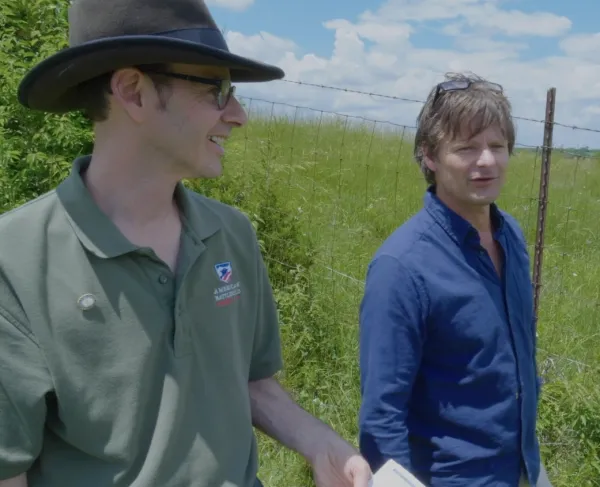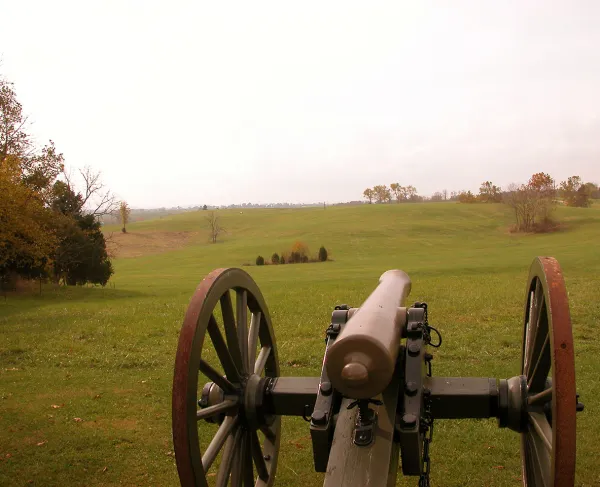
Saved: 128 Acres at Perryville Battlefield
Thanks to your support, 128 acres of hallowed ground have been forever saved at Perryville. This land fills the “hole in the donut” and substantially completes the preservation of one of the most important battlefields of the entire Civil War. Perryville was the largest and bloodiest battle fought in Kentucky and saw more casualties than many other well-known battles. The one-day battle of Perryville saw more casualties than all of Stonewall Jackson’s Valley Campaign combined. About 13 men fell every minute over the course of the five-hour battle. After Perryville, the South would abandon all hopes of folding the state of Kentucky into the Confederacy.
Perryville Battlefield as already – thanks in large part to our generous supporters – one of the best-preserved battlefields in America, with more than a thousand acres under protection. But now, thanks to generous matching grants from the federal American Battlefield Protection Program and the HTR Foundation, and the help of our supporters, we have saved this 90-95% of this critical history land forever.
The History
On October 8, 1862, two weary, thirsty armies confronted each other outside of Perryville, Kentucky. In the midst of the region’s worst drought in memory, the Union Army of the Ohio, commanded by Major General Don Carlos Buell, faced off against the Confederate Army of Mississippi, commanded by General Braxton Bragg. The location wasn’t a coincidence. According to historian Ken Noe, Bragg chose to reunite his force in Perryville, “taking tactical advantage of the hills west of town but also guarding a series of springs as well as the puddles in the bed of the Chaplin River."
The first attack of the day unfolded on the property we hope to save in this campaign. After a midday bombardment, Confederate Major General Benjamin Cheatham’s mostly-Tennessee brigades began their fateful advance toward the Union position. All of these troops, three brigades, crossed this property in grand lines of battle, some climbing steep banks and cliffs along the Chaplin River to get into position. As Cheatham’s men approached, Union troops lined up to meet them, extending their flanks to a prominent hill known as Open Knob. Cheatham’s lead brigade got caught in a terrible crossfire in an area known ever since as the Valley of Death.
As Confederates attempted to gain the Union flank, inexperienced troops, mostly from Illinois, advanced across a portion of the target property and clashed with regiments from Tennessee and Georgia. Cheatham’s men and other Confederate divisions advanced, driving all before them, over one ridge and then another, but they eventually ran out of steam (and ammunition) just as Union resistance (and counterattacks) began to exact a high toll.
Outnumbered, Bragg believed he had little choice but to abandon the field. The Battle of Perryville had lasted just five hours and been among the most ferocious of the Civil War. While Perryville was a tactical victory for the Confederacy, it was an important strategic victory for the Union that left Kentucky in Union hands for the remainder of the war.
Want to learn more about the land you helped save?
-
-
Read a detailed account of the Battle of Perryville from start to finish, featuring the words of soldiers on both sides of the horrific conflict.
-
Read biographies of some of the generals who participated in this fateful battle: Don Carlos Buell, Braxton Bragg, Leonidas Polk, Benjamin F. Cheatham and Alexander M. McCook.
-
See images of Perryville then and now.
-
Read the details of the reconnaissance mission by Confederate General Leonidas Polk that resulted in the decimation of the 22nd Indiana Infantry at Perryville.
-
Contemplate the meaning of this hallowed ground with an article on the environmental restoration of Perryville Battlefield.
-
See how the Battle of Perryville fit into the big picture of the Civil War in our Animated Map of the Entire Civil War.
Read a detailed account of the Battle of Perryville from start to finish, featuring the words of soldiers on both sides of the horrific conflict.
Read biographies of some of the generals who participated in this fateful battle: Don Carlos Buell, Braxton Bragg, Leonidas Polk, Benjamin F. Cheatham and Alexander M. McCook.
See images of Perryville then and now.
Read the details of the reconnaissance mission by Confederate General Leonidas Polk that resulted in the decimation of the 22nd Indiana Infantry at Perryville.
Contemplate the meaning of this hallowed ground with an article on the environmental restoration of Perryville Battlefield.
See how the Battle of Perryville fit into the big picture of the Civil War in our Animated Map of the Entire Civil War.


